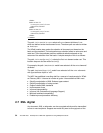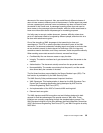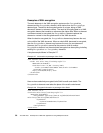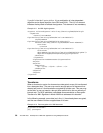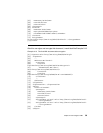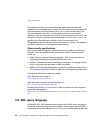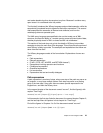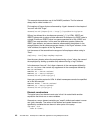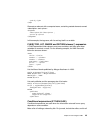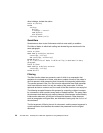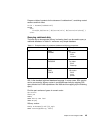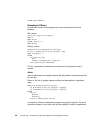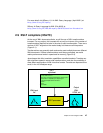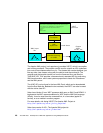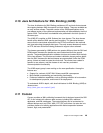42 The XML Files: Development of XML/XSL Applications Using WebSphere Studio
This example demonstrates use of the RANGE predicate. The first element
always has a ordinal number of 1.
Find captions of figures that are referenced by <figref> elements in the chapter of
"zoo.xml" with title "Frogs".
document("zoo.xml")/chapter[title = "Frogs"] //figref/@refid->fig/caption
XQuery has allowed for a de-reference operator(“->”). In HTML, IDREF and
IDREFS values refer to values of other elements' ID attributes. An IDREF value is
a single ID while an IDREFS value is a space-separated list of IDs. IDREF and
IDREFS are case-sensitive. In this case, the deference operator follows the
IDREF-type attribute, and returns elements referenced by the attribute. In the
example above, the de-reference operator locates, in the “figref” element, in the
“refid” attribute, the caption of the “fig” element.
List the names of the second-level managers of all employees whose rating is
"Poor".
/emp[rating = "Poor"]/@mgr->emp/@mgr->emp/name
Here the query locates, where the employees having a “poor” rating, the name of
the employees by looking up another emp element having a “mgr” attribute.
In the document "zoo.xml", find <tiger> elements in the namespace defined by
www.abc.com/names that contain any supplement in the namespace defined by
www.xyz.com/names:
NAMESPACE abc = "www.abc.com/names"
NAMESPACE xyz = "www.xyz.com/names"
document("zoo.xml")//abc:tiger[xyz:*]
Here query provides syntax for URIs. A default namespace can also be specified
as in this last example:
NAMESPACE DEFAULT = "www.abc.com/names"
NAMESPACE xyz = "www.xyz.com/names"
document("zoo.xml")//tiger[xyz:*]
Element constructors
The typical use of an element constructor is that it is nested inside another
expression that binds one or more variables.
Generate an <emp> element containing an "empid" attribute and nested <name>
and <job> elements. The values of the attribute and nested elements are
specified by variables that are bound in other parts of the query:
<emp empid = $id>
<name> $n </name> ,



